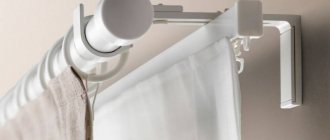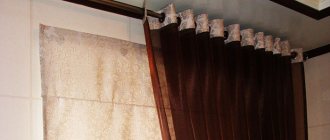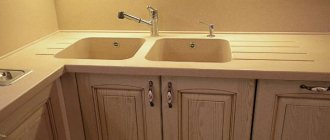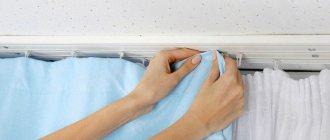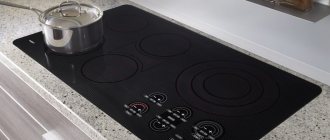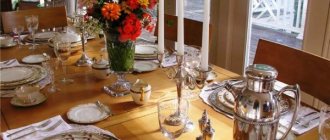Creating comfort in a home is a whole science in which there are no trifles: every detail and design element plays its role, helping to make it elegant and comfortable. An important role in this matter is played by correctly selected and hung curtains.
No interior is complete without beautiful curtains that frame the window openings.
Gone are the days when the housewife, armed with a needle, manually sewed loops on the curtain to secure it on the curtain rod hooks. This uninteresting activity took up a lot of time and required patience and accuracy.
The main thing is to secure the fabric in such a way that it decorates the room and creates a special mood.
Today, these problems are much easier to solve if you learn how to hang curtains on curtain tape on hooks.
Advantages of curtain tape
This strip is made from different materials. For curtains made of thin fabrics: organza, veil and others, a transparent, soft, thin but durable material is used. To work with denser bases, the thickness and texture of the braid will be different. It is easy to stitch it on a machine in any part of the product, depending on the design ideas for the curtains.
A very convenient device for draping curtains is curtain tape.
With its help, you can form folds of various configurations, adjusting their size and number. It has the following features:
- makes sewing easier;
- there is no need to sew loops for hooks - they are already on the tape;
- makes it possible to drape fabric of any texture and density;
- allows you to design window openings in an original way;
- with its help you can adjust not only the length, but also the width of the curtains.
Using curtain braid, beautiful folds of the same size and shape are created.
In addition, after washing it does not shrink and retains its shape.
Using a curtain strip, you can carefully trim the edge and attach the finished curtain to the curtain rod without using special clothespins.
The products are presented in a variety of options and differ in the methods of fastening, size, and shape of folds, which can be designed using your imagination.
They are made from fishing line, polyester, non-woven base.
There are also different connection methods, one of which is fastening loops for hooks.
They are arranged not only in one, but in several rows. The design features of the drapery depend on this:
- simple folds are made on a strip with two rows of loops;
- The upper part of the curtain can be decorated with a strip with four-row installation of fasteners.
You can attach the strip to the curtain by sewing or gluing it.
In this case, the adhesive tape is available in single-sided and double-sided versions. In this case, it is attached to the curtain fabric after smoothing the base with an iron.
The different widths of the tape - from 1.5 cm to 10 cm - allow you to use it for various options for fastenings and curtains of different lengths and materials, as well as diversify the methods of decoration.
The narrower the ribbon, the lighter the fabric should be.
It helps to perform all kinds of assemblies, including:
- horizontal;
- vertical;
- “accordion” and other drapery options, such as “pencil”, “glass”, “butterfly”, “bouffe”, “tulip”, fan-shaped and others, where curtain tape is used everywhere for installation on hooks.
There are several types of curtain tapes on sale, each of which is designed to assemble the fabric in the desired way.
There are other types: zigzag, tubes, “triplets”. Each type of curtain tape is made from different materials and has a parameter called the assembly factor (CS). It is the ratio of the original width of the curtain to the folded width, and is usually equal to 1.5; 2; 2.5 and 3. (KS) is usually indicated on the product packaging.
The wide ribbon has several rows of hooks that allow you to hang the curtain higher than usual, raising the fabric above the curtain rod.
Types and applications of tape
Textile tape for curtains is, first of all, needed to form folds on the curtains and only then has the utilitarian function of attaching to the curtain rod. It is divided into transparent and blind options for thin and dense fabrics, respectively. The type of folds determines the amount of material, the length and width of the tape, the presence of pockets and cord levels:
- Ribbon for simple drapery 6 cm, coefficient 1.5. Normal horizontal folds are formed, acceptable for light fabrics. A sheer, polyester-blend textile with two cords for simple style. As a rule, these types of curtain tapes are designed for attaching tulle, silk, and organza. Thin rods and even strings serve as cornices.
- Bow ones. Required for holding multi-layer canvases and lambrequins. Folds of different sizes are most advantageous if you purchase fabric that is 2.5–3 times wider than the cornice. The tape itself is wide - 5 cm, for forming a complex structure in different directions. Used for heavy, smooth fabrics - then the folds are visible in their splendor. To properly hang a curtain on a strip with such folds, they are formed manually before fastening.
- Waffle folds. They are distinguished by uniform distribution of tissue, without group formations. Perfect for linen curtains, silk, chintz. It is not recommended to hang tulle on a curtain tape with such drapery. Especially white and transparent, as the beauty of the fold will be lost. Build factor 2.5.
- Cylindrical. Another name is pencil. They create round folds that are interesting for curtain rods on rings. The width of the braid is from 7.5 to 10 cm. Two loops are held by one hook or ring. Uniform distribution is imperative, otherwise these types of curtain assembly will not give an effect. In order not to overtighten individual sections of the curtain, folds are formed before fastening with special clips and then the canvas is hung on the curtain rod.
- Flemish folds. Width 8.5 cm, with a coefficient of 2. The complex design of the letter V is achieved by tying the cord into the formed loops, but the loops cannot be pulled, otherwise the folds cannot be disassembled. Their formation requires skill, even to hang tulle on a curtain tape, not to mention heavy materials. Suitable for holding curtains with various prints that do not form a specific pattern.
- Double pleated. To create such a drapery, a 10 cm wide option with two pockets is suitable. The result is three rows of folds in a checkerboard pattern.
Related article: DIY fence lighting
Original curtain tape
An ordinary strip of textile is used not only for traditional curtains, but is also perfect for attaching Roman, Austrian and French curtains. A non-standard approach and fixation to each option - on the side, in the middle of the canvas - will make the curtains on the curtain tape a true work of art.
How to hang curtains with curtain tape on hooks
Before using the tape, it is a good idea to know the features of this type of fastening in order to understand how to hang curtains on curtain tape on hooks.
This method is the most common and quite simple.
They are mounted on wooden, metal or plastic ceiling or wall cornices, but it is possible to decorate a window opening without using them. To do this, special wall fastenings are installed at an equal distance from each other.
The classic way to hang curtains
Curtain tape is available in widths from 2.5 to 17 cm. Depending on the coefficient, the assembly can be bow, pencil, or checkerboard. White transparent braid is used for tulle and organza curtains. The most popular is 2.5 cm or 6 cm tape. Before hanging curtains, you need to carefully think through all the steps.
Before fastening, the folds are formed manually. To ensure uniform assembly on one side of the leaf, it is necessary to make a fixation by securing the cords tied together to the door handle. Using one hand, stretch the braid, and with the other, carefully and carefully collect the folds. The distance between the folds should be the same, without creases or distortions.
At the level of the last fold, tie the tightening cords into a strong knot, securing the excess on the cord winder. This technology is required in order to be able to open the curtain for washing. With fastened curtain rod hooks, you can wash the curtains along with the hooks. At the last stage, the hooks need to be threaded into the loops, then with the curtain attached to them, inserted into the cornice. For simple pencil and waffle folds, the distance between the hooks should be 8-10 cm.
We invite you to watch a video on how to beautifully hang curtains on curtain tape:
You may also be interested in: Types of curtain hooks - decorative, closed or open
Features of curtain hooks
Before forming the drapery, the curtain must be ironed well. The hooks should already be selected in size and material, depending on the format of the curtain and the fabric used. For their production the following are used:
- metal-plastic, reliable and safe;
- metal; usually aluminum, brass or steel;
- High quality plastic, one of the new generation materials.
Attach hooks to the curtain with your own hands at an equal distance of 8 - 10 cm.
Each of them has its own advantages and disadvantages
- Metal-plastic is the most optimal for the production of fasteners. Its price is affordable with high quality. Many consider it an ideal base for making curtain hooks. They hold their shape remarkably well and are completely silent in operation.
- Plastic ones are the cheapest, they move silently along the ledge. They are suitable for light to medium weight curtains. The disadvantage is considered to be low strength. Over time, they lose their shape, and the composition on the window opening no longer looks so impressive.
- Metal hooks are the most expensive, but also the most reliable. They do not deform and securely fix the canvas, preventing it from sliding down. Their “noisiness” is considered a significant disadvantage. In addition, if they are made from cheap, low-quality metal, the products will rust, leaving dirty marks.
If the choice was made on metal fasteners, you should give preference to stainless steel.
Step-by-step instructions for using curtain tape on hooks
To decorate a room, it is important to know how to hang curtains with tape on a rod for a more durable “fit.” The product can already be sewn industrially, or it can be attached independently. In order for the finished composition to hold firmly, it is important to know the order of its design and choose the right braid, taking into account such an indicator as the assembly coefficient.
The KS determines the “pitch” of the fastenings, depending on the width, which matters for the number of assemblies and their splendor.
When hanging curtains, it is important to sew the hook tape correctly. This operation is performed as follows:
- cut off a piece from the strip equal to the length of the curtain plus an increase of five centimeters;
- lay the ends of the braid down 2.5 cm each and smooth them;
- pull out the cords so that they hang freely and are not secured;
- place the tape over the allowance for the top trim and pin;
- stitch, retreating 12 mm from the top and bottom, stitch twice.
If the curtain tape has several ropes, we sew it along each of them.
Important! It is necessary to stitch in such a way as to close the fold so that the cords remain free.
Then, stepping back 10cm from the side edge, you need to hang the hook - it will be the outermost one. Having folded the curtain along this hook, the next one is hung on two loops at once - the outermost one and the one opposite it. This action is called a technical twist. It can be done differently: tuck it in immediately when the strip is sewn on.
The folds obtained on the braid after tightening the ropes should be evenly leveled.
The next element is threaded into the loop close to the collar, and it is threaded into the second one - after five centimeters. The result should be a fold. Further formation of drapery using curtain tape on hooks is done in a similar way.
Curtain tape is a convenient device used on any curtain, curtain or drapery.
What nuances to pay attention to when choosing
When choosing hooks for curtains and drapes, you need to take into account their compliance:
- weight of the curtain composition;
- frequency of its operation (moving or hanging stationary);
- design of curtains and interior in general;
- loop size;
- type of cornice.
Thus, before hanging curtains, you should first find out how long they will last without breaking or deforming and securely holding the curtains in the required position. In addition, you must take into account the type of cornice. For example, products attached to rings are perfect for round cornices, while bohemian consoles are best complemented with plastic hooks, which are designed for curtains with rollers.
There is no need to save on curtain accessories unless absolutely necessary. It would seem that fastening is a trifle, but it can also nullify all efforts to create a harmonious environment. Therefore, despite the fact that hooks are very convenient and versatile, before choosing them or any other method of hanging curtains on a cornice, you need to think through the entire design of the curtain composition and its compliance with the overall style of the interior.
How to properly and beautifully hang tulle on a curtain tape
If very thin and delicate fabric was purchased for the curtain, when decorating it, it is important to know how to hang the tulle on hooks, and to be extremely careful and attentive, avoiding unnecessary punctures of the fabric, so as not to deform it.
The braid sewn to the curtain allows you to decorate the window opening in an original way and drape the curtain with soft waves.
It should be noted right away that to work with such thin materials, you will need transparent or translucent tape. It is available in various widths. The craftswoman decides which one is suitable for decoration.
Curtain braid is a simple, quick way to hang light tulle, curtains or heavy curtains.
Before hanging tulle curtains, you will need:
- measure and carefully trim the fabric,
- cut off excess;
- process the edges and cut areas.
After this, you can sew the ribbon in the following order:
- bend the top edge to the width of the strip;
- carefully iron the edge of the fold;
- Tuck the edges inward and attach it to the edge of the ironed fold line, which will prolong its service.
As a rule, narrow (2.5-4 cm) braids are used on curtains where drapery is not needed.
Additional Information. Before starting work, it is necessary to wash the fabric so as not to spoil the finished curtain if it suddenly happens that the material shrinks after washing.
How to beautifully assemble tulle on a ribbon with a photo
The secrets of interior design are simple; any housewife can cope with them. To make her work easier, many functional devices have been invented. Textiles are one of the main decorative elements in the design of any room. Recently, light, airy tulle without heavy curtains or thick curtains has been increasingly used. Each type of fabric has its own functional devices.
How to control emotions and manage anger
The housewife does not have to deal with the tedious sewing of buttonholes along the edge of the fabric. Now curtain tapes have been invented for this purpose. They vary in width, number and material of fastening elements. The lighter the fabric that frames the windows, the narrower the special tape can be.
However, the choice of such a device is dictated not only by the need to hang the decorative fabric, but also by the configuration of the folds.
Tulle on a ribbon can be assembled in different ways. For example, the most common option is with vertical folds.
The folds on the shading fabric can be horizontal - it will take a little more time, but it looks very picturesque.
The tape for securing tulle allows you to create interesting configurations, known among experts under code names - like a butterfly, an accordion, a puff or a fan.
Note!
The choice of curtain tape is dictated not only by the type of fabric, its lightness or transparency. Some types may not be suitable for a thick decorative cornice or for a wall mount that accommodates hook tape. Much depends on the material from which the hooks are made. For tulle, lightweight ones made of durable polymer are usually recommended.
It will be possible to beautifully assemble airy fabric on a ribbon only if the canvas is carefully processed on all sides (the side edges are no less important than the top or bottom). Correct selection of curtain tape of appropriate width, with small hooks made of lightweight material. The required configuration is thought out in advance. It is possible to use additional decorative devices.
Features of hanging tulle
The comfort and originality of the room’s interior depends on the ability to correctly design and place tulle. To make it look elegant and beautiful, you need to take into account all the nuances of handling tulle curtains.
After the curtain tape is attached to it, you need to tighten the cords (cords) tightly so that they do not pull out when tightening.
If necessary, they can be tied into knots, but be sure to check their tightness.
Note! In order for the curtain to stay tight and not slip, and also to present a complete composition, it is necessary to secure the clips and hooks. In this case, the number of loops on them should be the same.
Examples of pleat assembly
When forming drapery, you will have to take into account the texture and density of the material. As for tulle, as well as organza, veil, mesh tulle, extreme care is required, taking into account the size of the fabric and the ornament.
In order for the folds to be soft and beautiful, the screed must be formed on both sides at the same time.
The resulting composition is fixed with a knot.
There are many drapery options. Which one to choose depends on the taste of the housewife.
Do not forget that for each drapery option there is its own assembly factor (AC).
- The most universal is the “pencil” method. It is not difficult to implement and does not require a lot of material consumption. Best (KS) – 1.5. Particularly suitable for light fabrics.
- The stitch style creates uniform rows of folds, the number and density of which is determined by the tension of the cord.
- Thin curtains with lurex threads, golden and silver glitter look great with voluminous, uneven waves of puffs. The luxurious look of the curtain is achieved through the use of a wide curtain strip with four rows of cords. Optimal (KS – from 2.5.)
- “Fan” speaks for itself, looks rich and elegant.
- Diamond-shaped screeds form a “butterfly” relief.
- If the fabric of the curtain tape is connected at the bottom with a double tuck, you get a “glass” or “glass” drapery - it is called differently. A strip with two rows of loops and (KS) 2.5 is suitable for it.
- Curtains made of tulle, organza or veil with a bow bookmark look very cute. It is obtained by tightening the laces in such a way that double and single bows are placed close to each other. It is better to take braid from chiffon, mesh or organza with (KS) from 2.5 to 3.
Ready-made curtains on tape: examples, description.
Curtains decorated with curtain tape will add originality to any room if they are chosen tastefully and fit harmoniously into the interior.
It is better to place the hooks at a distance of 5-6 centimeters, this way you will protect yourself from sagging of the canvas.
Moreover, they can be used to decorate rooms in a variety of colors and any style:
- For minimalism and hi-tech, a laconic design is suitable, without any “embellishments”;
- Provence and shabby chic will delight you with light, weightless curtains with soft floral or checkered-striped patterns, beads, beads or ribbons along their bottom;
- The children's room will be filled with a special spirit of childhood and mischief if clips in the form of funny animals, butterflies, flowers, cars or bows are used to secure curtains made of fabric that does not shrink when washed and does not fade.
To decorate and add originality, a variety of elements can be used, sometimes unexpected, such as brooches, soft toys, rings made from bracelets, large buttons.
The classical style, as well as baroque or rococo, is characterized by the extensive use of cords and tassels.
Taking into account the stylistic features of the interior allows you to achieve the best result when draping, giving the room originality and originality.
Examples of decorating rooms with curtains with a detailed description of the procedure can be found on the Internet.
